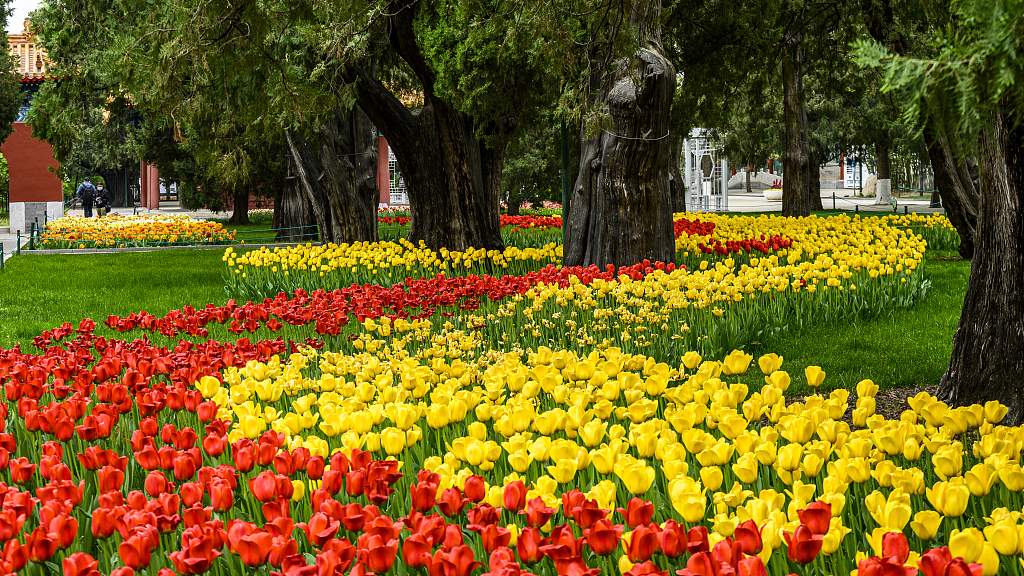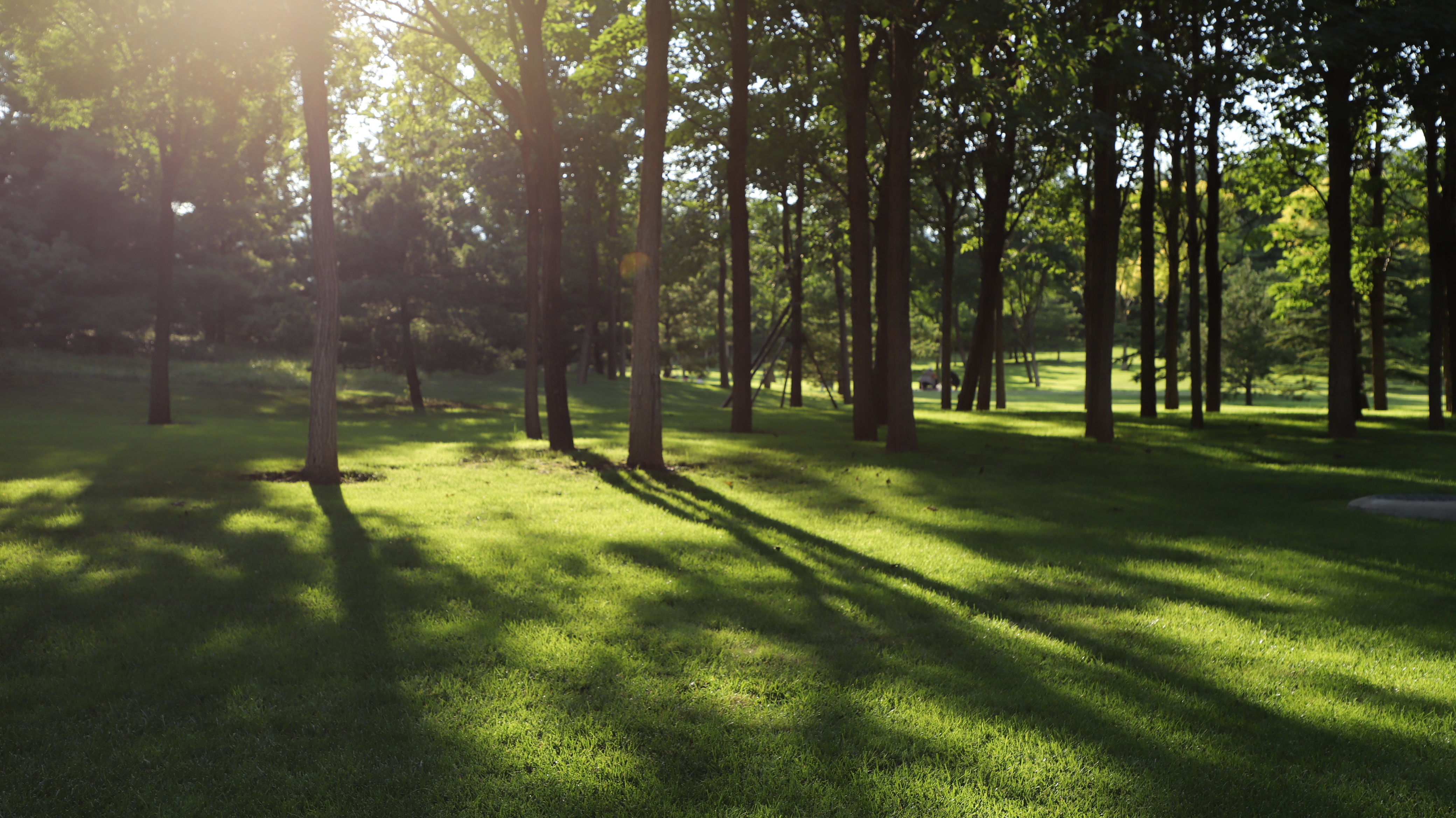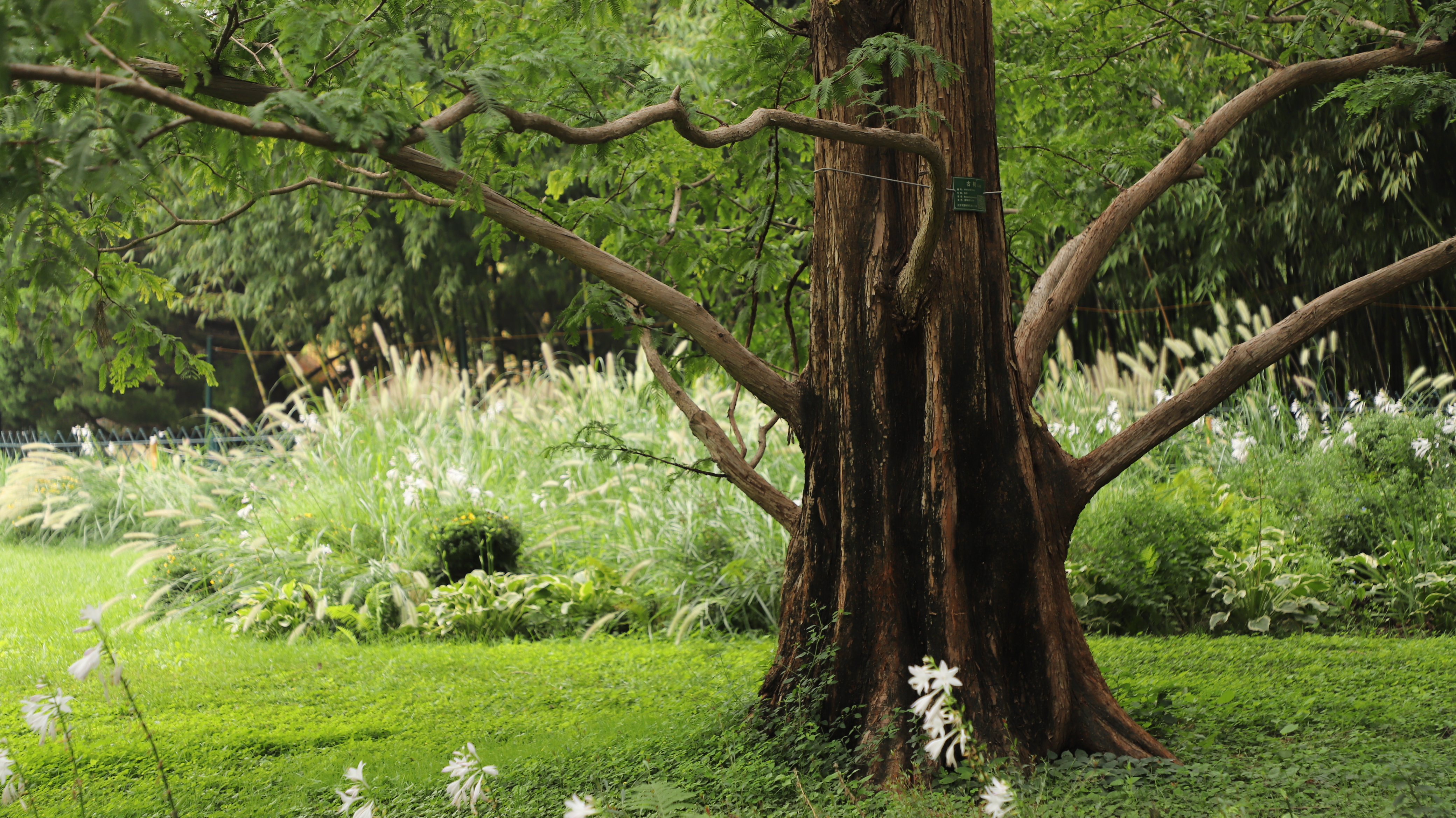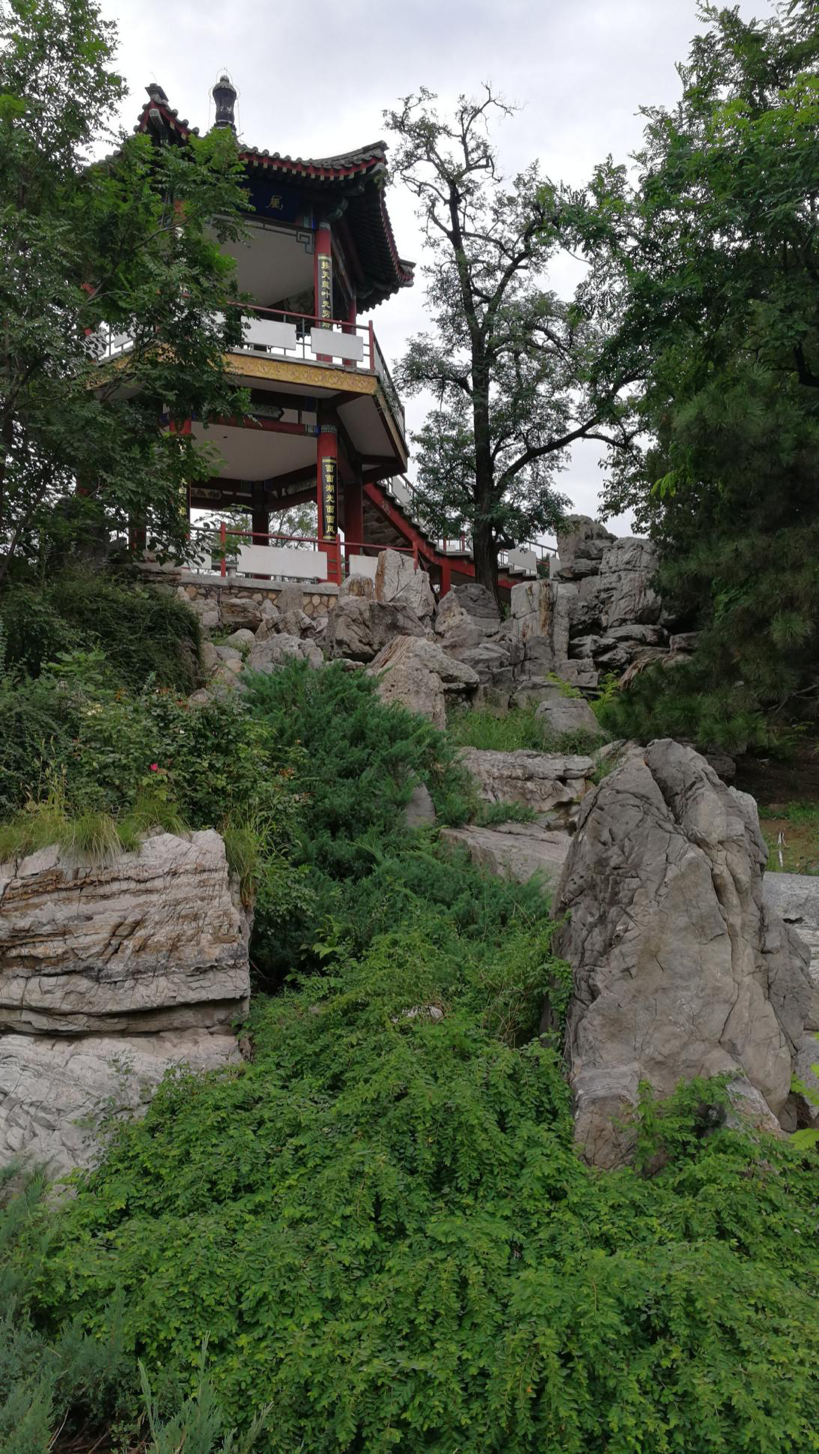Bushes cut into the same height surround the well-trimmed lawns dotted with flowers of the same species or even colors that are meticulously divided into patches that sit where we thought they "look" nice. This is usually what see in almost every garden in Beijing. It seems to always be our decision to choose what trees or flowers to plant and where. Because the city is the result of human invention, so should everything within the city. But a recent trend in city garden design says otherwise.

Well-planned tulip blossoms on a well-trimmed turf under trees in Zhongshan Park in Beijing, with limited variety of plants can be seen. /CGTN
Well-planned tulip blossoms on a well-trimmed turf under trees in Zhongshan Park in Beijing, with limited variety of plants can be seen. /CGTN

A green space in Beiwu Park in northeastern Beijing, little variety can be seen in the small woods. /CGTN
A green space in Beiwu Park in northeastern Beijing, little variety can be seen in the small woods. /CGTN
"Follow nature" beats the complete human intervention and is becoming the leading concept in urban garden designing. After all, nature knows best.
In contrast to the long-desired order and harmony in green space arrangement, the uprising concept seeks to largely imitate the wild environment in urban parks. In other words, it permits the coexistence of shrubs and trees as well as plants of different kinds, heights and ages in the same space without deliberate maintenance intended exclusively for aesthetic purposes.
The increased variety in vegetation subsequently attracts diverse wildlife, which further contributes to a better biological diversity that in return benefits the urban environment. Take Lianhuachi Park for example, by growing more bird-attracting trees and pollinator-friendly flowering trees in a pilot area of 4.2 hectares in the south of the park, the number of birds and bees lured to this area is much bigger than that in the old area where trees of those kinds are short in number, according to the observation of the Beijing Gardening and Greening Bureau.

Trees and shrubs of different species and height are grown at both side of the road with minimum artificial maintenance in Lianhuachi Park. /CGTN
Trees and shrubs of different species and height are grown at both side of the road with minimum artificial maintenance in Lianhuachi Park. /CGTN

A pilot area with the attempt to increase the plant variety under giant trees in Zizhuyuan Park. /CGTN
A pilot area with the attempt to increase the plant variety under giant trees in Zizhuyuan Park. /CGTN
Additionally, the attracted birds that consume both plants and insects contribute to the environmentally benign biological control of diseases and pests in urban forests.
Introducing more native plants features another key rule in the concept. Many people see native plants as boring, but they're actually incredibly hardy and great for helping pollinators and the environment. They are adapted to the local climate and don't require special care.
Take a close look at the rock gaps during your causal stroll in Lianhuachi Park next time. Rather than a bare and boring pile of rocky hills, the rocks are blanketed by a large area of flourishing Leptopus chinensis (Bunge) Pojark. that grow in the stone gaps. Since it is mostly found in rock gaps or steep cliffs in many parts of China, keeping it as it was considered an insignificant weed pulls us one step closer to real nature.

Blanket of Leptopus chinensis (Bunge) Pojark. covers the rocks that support the artificial architecture in Lianhuachi Park. /Beijing Gardening and Greening Bureau
Blanket of Leptopus chinensis (Bunge) Pojark. covers the rocks that support the artificial architecture in Lianhuachi Park. /Beijing Gardening and Greening Bureau
(If you want to contribute and have specific expertise, please contact us at nature@cgtn.com.)

